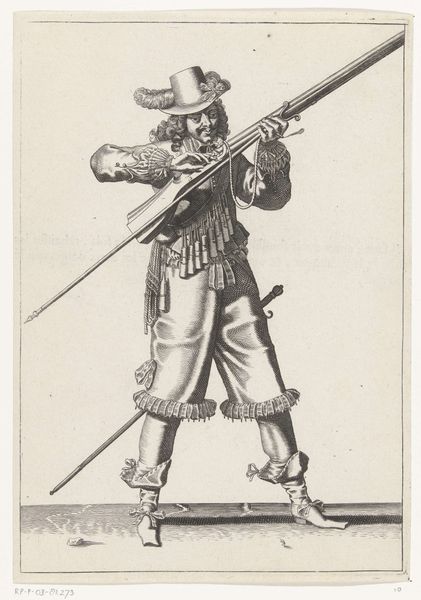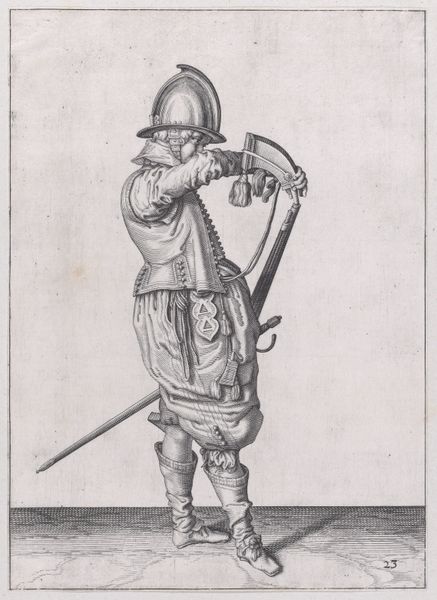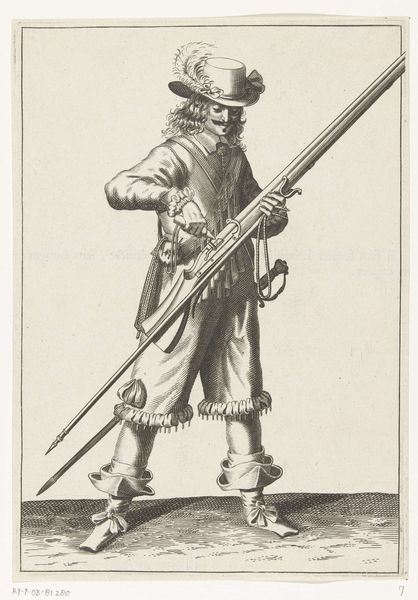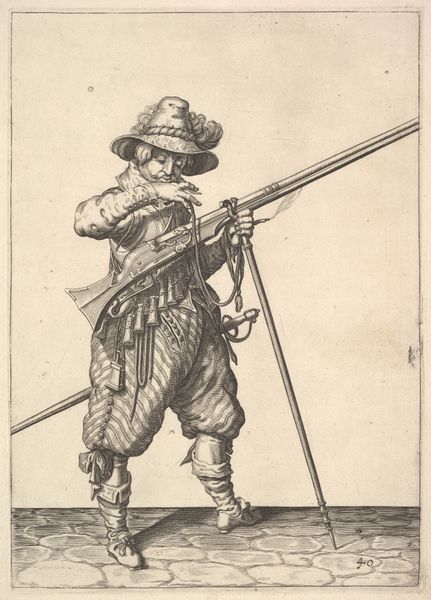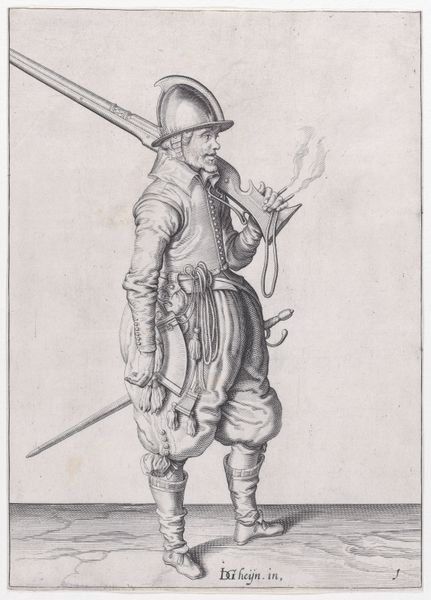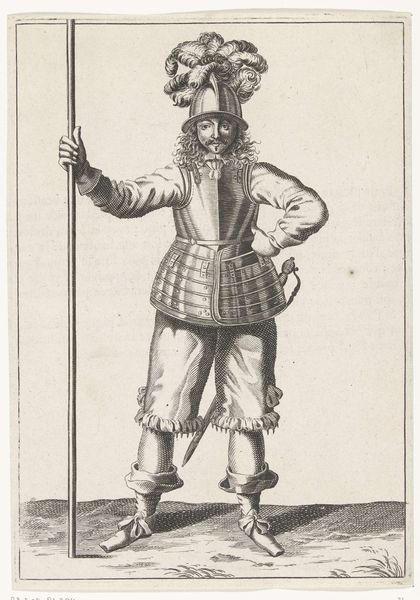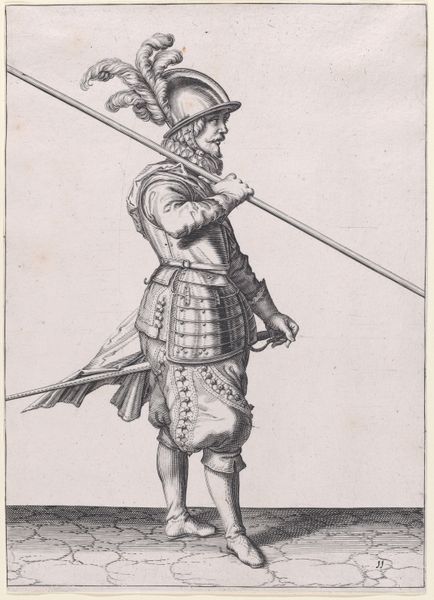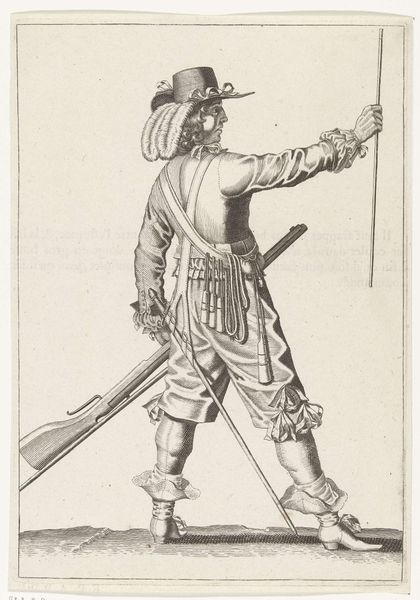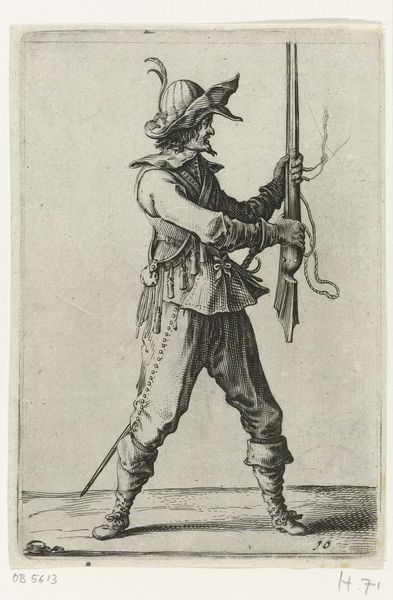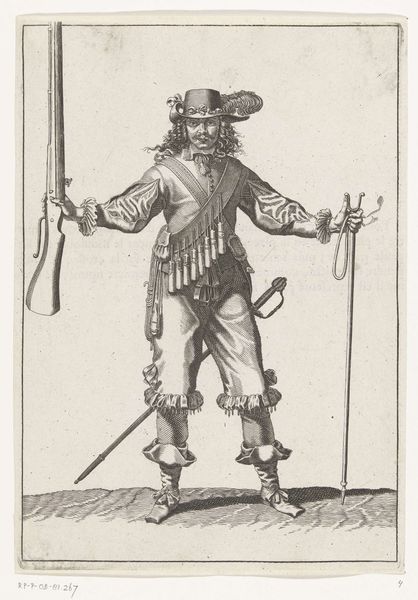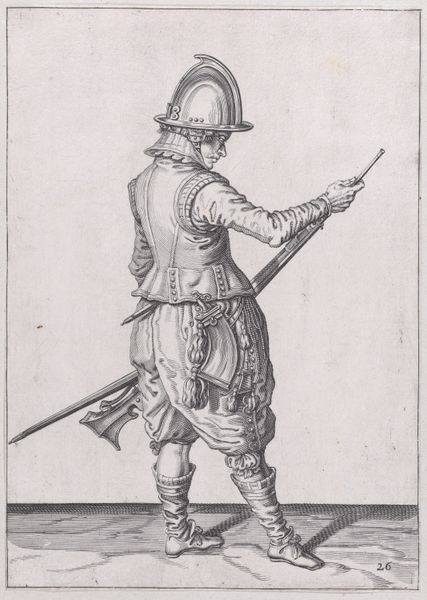
Soldaat die zijn spies met beide handen horizontaal op schouderhoogte draagt, zijn rechterhand bij de voet van het wapen, ca. 1645 1645 - 1647
0:00
0:00
print, engraving
#
portrait
#
weapon
#
baroque
# print
#
old engraving style
#
figuration
#
personal sketchbook
#
sketchbook drawing
#
history-painting
#
sketchbook art
#
engraving
Dimensions: height 235 mm, width 165 mm
Copyright: Rijks Museum: Open Domain
Curator: This engraving, created by Petrus Rucholle around 1645-1647, depicts a soldier carrying his pike. What's your initial take on this work? Editor: I'm immediately struck by a certain tension. The soldier appears rigid, almost ceremonial, but there's a definite underlying sense of impending conflict inherent in his poised stance and ready weapon. Curator: Precisely! Note the meticulous detail in the rendering of the armor, and the confident horizontality of the pike cutting across the pictorial space. Rucholle's command of line and texture creates a visually arresting figure study. It adheres strictly to the formal conventions of Baroque portraiture with that intricate detail in costume and weapons. Editor: I see that. But consider, too, what it meant to depict a soldier in this manner during the mid-17th century. This was a time of constant upheaval and war in Europe. Was this intended as a neutral depiction of soldiery, or does it perhaps carry a specific political charge, either glorifying military service or perhaps commenting subtly on its realities? There is very little context given; no scenery, no setting. Is he the archetype of the ever-vigilant protector? Curator: The lack of background certainly focuses our attention on the soldier's form and the details of his accoutrements, which become central to our reading of the image. His fashionable plume feels, arguably, at odds with the violence suggested by his vocation. Note the almost scientific rendering of the reflections in the armour plating. Editor: Indeed. It seems Rucholle is playing with ideas of masculinity and its construction through military image making. The detail seems to imply that status symbols, fashion and elegance are tools, even on the battlefield. The print's medium further democratises the military figure to be a widely distributed figure that might further the regime through cultural visibility. It definitely complicates any straightforward heroic reading, wouldn't you say? Curator: Complicates, perhaps enriches. The work functions, structurally, to create a moment of contemplation and perhaps even aesthetic delight through careful formal control. The play of light and shadow elevates this to something beyond pure function. Editor: I see this as another kind of engagement that creates further conversation around questions of gender, class, and militarism in that period, offering much food for contemporary critical thought. Curator: A complex, well-structured portrait providing, equally, a fascinating aesthetic study. Editor: And prompting questions that are not strictly related to the aesthetic alone. A definite statement of intent!
Comments
No comments
Be the first to comment and join the conversation on the ultimate creative platform.

